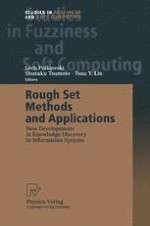Rough set approach to reasoning under uncertainty is based on inducing knowledge representation from data under constraints expressed by discernibility or, more generally, similarity of objects. Knowledge derived by this approach consists of reducts, decision or association rules, dependencies, templates, or classifiers. This monograph presents the state of the art of this area. The reader will find here a deep theoretical discussion of relevant notions and ideas as well as rich inventory of algorithmic and heuristic tools for knowledge discovery by rough set methods. An extensive bibliography will help the reader to get an acquaintance with this rapidly growing area of research.
